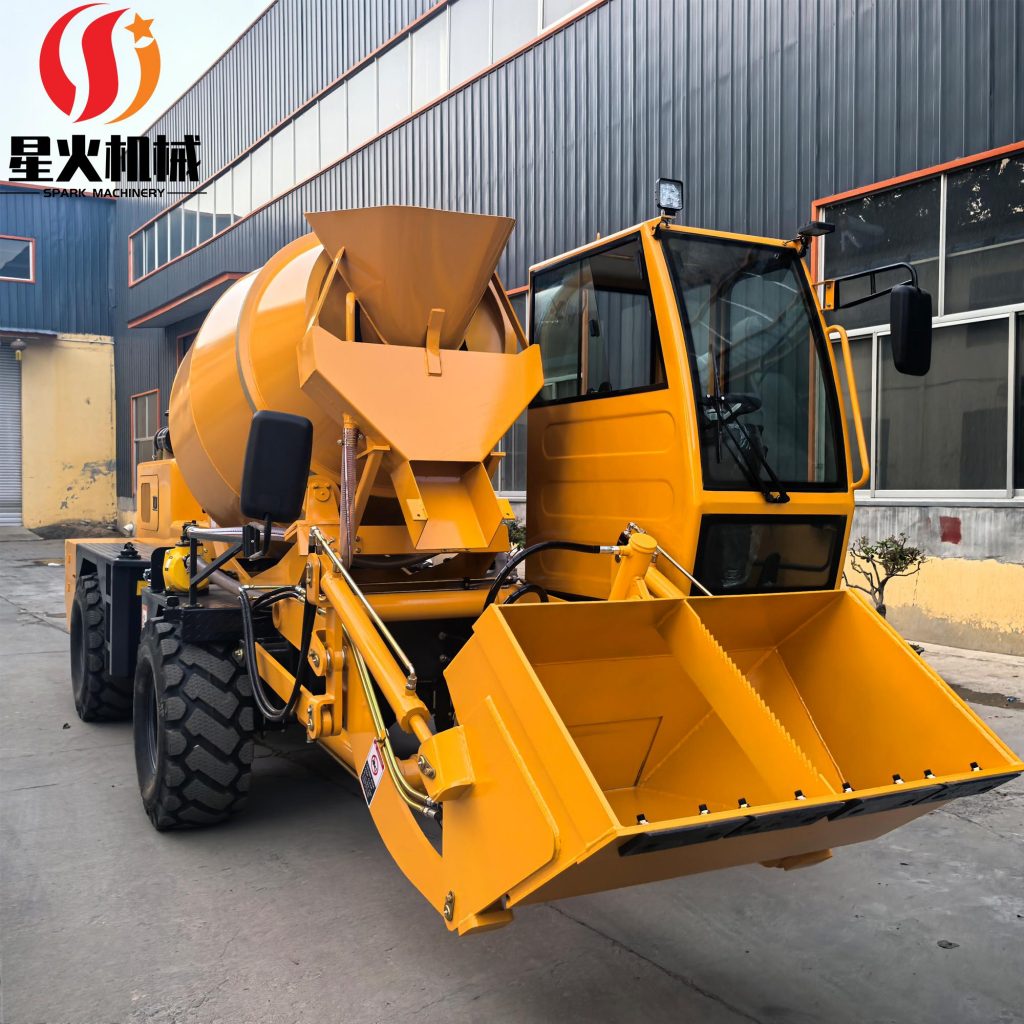The Evolution of Concrete Mixer Trucks: From Horse-Drawn Drums to Electric Titans
1. Early Beginnings: Manual Mixing to Mechanical Innovations
The history of concrete mixer trucks traces back to the late 19th century, when concrete was primarily mixed manually using shovels and wheelbarrows. This labor-intensive method lacked consistency and efficiency, hindering large-scale construction projects. The first breakthrough came in 1904 when Richard Bodlaender, a German inventor, patented the portable mortar mixer . Mounted on a horse-drawn cart, this device replaced traditional wheels with a rotating drum containing paddles. As the cart moved, the drum rolled on the ground, mixing ingredients like cement, sand, and water. While primitive, this invention laid the foundation for mechanized concrete mixing.
In 1909, Alvah Handsel introduced a steam-powered mixer with a hexagonal drum . Although more efficient than horse-drawn models, steam engines were bulky and dangerous. Meanwhile, stationary mixers emerged in factories, but transporting pre-mixed concrete over long distances remained impractical. The need for on-site mixing and transportation drove further innovation.
2. The Birth of the Motorized Concrete Mixer Truck
The early 20th century saw significant advancements in automotive technology, which directly influenced concrete mixer design. In 1920, Ackert Bickel patented the first motorized concrete truck . Equipped with an internal combustion engine and a steering wheel, this vehicle featured a large drum on the truck bed. However, its design had flaws, including excessive dead space and limited mixing efficiency.
A major leap occurred in 1930 when Charles Ball, working with Chain Belt Co., revolutionized the mixing drum design . His patents introduced helical blades inside the drum, ensuring uniform mixing during transport. This design became the industry standard for decades. By the 1930s, demand for concrete trucks surged due to massive highway construction projects in the U.S., such as the Interstate Highway System.
3. Hydraulic Systems and Industrial Dominance
The 1950s marked a turning point with the adoption of hydraulic technology. Hydraulic pumps replaced mechanical gears, allowing precise control over drum rotation speed and direction. This innovation improved mixing efficiency and reduced maintenance costs. In 1958, German company Schwing introduced the first integrated concrete mixer truck , combining mixing and transportation in a single vehicle. Schwing’s design featured a tilting drum and a hydraulic system that enabled smooth operation on rough terrain.
By the 1970s, hydraulic systems became industry-wide standards. Manufacturers like Mack Trucks and Peterbilt incorporated hydraulic systems into their designs, enhancing durability and performance. The rear-discharge mixer emerged as the most common type, offering better maneuverability on construction sites.
4. Global Expansion and Market Growth
The post-WWII era witnessed rapid urbanization and infrastructure development worldwide. Concrete mixer trucks became indispensable in projects like the Panama Canal expansion and the Channel Tunnel construction . In the U.S., companies like Wayne Works and Roscoe Lee introduced transit mixers that could be mounted on standard truck frames, reducing costs by allowing trucks to be repurposed for other tasks .
By the 1990s, Asia-Pacific markets, particularly China, became major players. Domestic manufacturers like Sany and Zoomlion developed cost-effective trucks tailored to local needs. The global market size grew steadily, reaching USD 3.59 billion in 2023 and projected to hit USD 5.61 billion by 2032 .
5. Modern Innovations: Automation and Sustainability
The 21st century brought automation and smart technologies to concrete mixer trucks. GPS navigation systems optimized delivery routes, while telematics allowed real-time monitoring of drum rotation speed, temperature, and fuel consumption . Sensors and AI algorithms adjusted mixing parameters based on environmental conditions, ensuring consistent concrete quality.
Environmental concerns also drove innovation. In 2023, Volvo Trucks delivered the first fully electric heavy-duty concrete mixer to CEMEX . The FMX Electric model features a 360 kWh battery and a 9 m³ drum, offering zero emissions and silent operation. This aligns with global efforts to reduce carbon footprints in construction.
6. Challenges and Future Trends
Despite advancements, concrete mixer trucks face challenges. The industry must balance efficiency with sustainability, as traditional diesel models contribute to pollution. Electric trucks, while promising, still struggle with limited range and high costs. Additionally, maintaining concrete quality during long transports remains a critical issue.
Looking ahead, hydrogen fuel cells and autonomous driving could revolutionize the sector. Companies are also exploring lightweight materials to increase payload capacity and reduce energy consumption. As smart cities and green infrastructure projects expand, the demand for efficient, eco-friendly concrete mixer trucks will continue to grow.
Conclusion
From horse-drawn carts to electric-powered giants, concrete mixer trucks have evolved significantly over a century. Each technological leap—hydraulic systems, automation, and electrification—has addressed industry needs while pushing boundaries. Today, these vehicles remain vital to global construction, embodying the fusion of innovation and practicality. As sustainability takes center stage, the next decade will likely see even more transformative changes, ensuring concrete mixer trucks remain at the forefront of modern infrastructure development.

